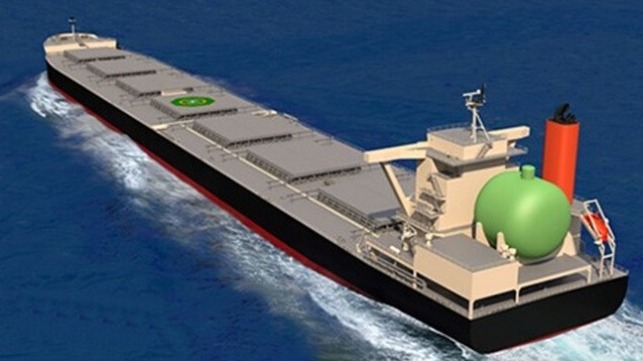Japanese Receives AIP for Oxidation System to Reduce Methane Slip

A collaboration of Japanese shipping and engineer companies is reporting that they are making significant progress in developing a design to reduce methane slip aboard ships using LNG-fueled engines. A little over four months ago they announced their government-sponsored research project to address one of the key criticisms of LNG as an alternative fuel. Today, the companies reported their design concept has received an initial Approval in Principle from ClassNK and that they are moving forward toward a demonstration.
While there has been significant progress in the design of LNG engines, one of the concerns and criticisms is methane slip, the release of unburnt methane into the atmosphere, which environmental activists argue is several times more damaging to the environment than carbon emissions from fossil fuels. These criticisms have led major organizations including the World Bank to dismiss LNG instead encouraging investment in other next-generation alternative fuels while proponents and trade groups argue the new engines have greatly reduced or eliminated methane emissions.
Japan’s Hitachi Zosen Corporation, Mitsui O.S.K. Lines, and Yanmar Power Technologies Co. report working in combination they have developed and received the AiP for the world's first methane oxidation catalyst system. In the design developed by Hitachi Zosen and Yanmar, the system is placed in the exhaust pipes of LNG fuel engines and generators that contain unburned methane, and methane is oxidized on the catalysts to reduce methane slip.
The project launched last fall with the support of the New Energy and Industrial Technology Development Organization (NEDO) and aims to reduce the environmental impact of LNG fuel engines. They set a goal of achieving a methane slip reduction rate of more than 70 percent by 2026 by combining a methane oxidation catalyst and engine improvements. The project includes verifying the design concept in actual vessels.
The ClassNK approval is being called an important first step toward establishing the technology for this system. The companies report that their design meets international safety standards and other regulations and they are now working together to conduct risk assessments and implement other measures. MOL and Namura Shipbuilding Co. are exploring building a demonstration vessel and will design the system's installation.
When they announced the project in 2021, they said they would be installing the design on a coal carrier built by Namura and operated by Mitsui. They expect the system could become commercially available within four years providing significant environmental benefits for the growing number of ships planned using LNG to meet the IMO and shipping industry’s near-term goals for reducing carbon emissions.
